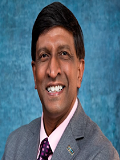|

Aviva Ueno
|
|

Andy Curtis
|
At the TESOL 2023 Convention in Portland, Oregon, Andy ended up giving a total of seven presentations, which may be a record! But for most of those presentations (four of seven), he was part of a panel (usually, the last panelist to present). In addition, one was a three-person presentation and in only one presentation was Andy the sole/first, plus a Tea with Distinguished TESOLers. As this was his first time giving that many TESOL Convention presentations (in barely three days), we decided to see it as an opportunity (perhaps a unique one) to use recordings of all of his presentations (except the Tea with TESOLers session) to do intensive, in-depth teacher professional development (Curtis & Cheng, 1998; Bailey, Curtis & Nunan, 2001; Curtis, 2020).
Aviva agreed to attend all the sessions and to record them all, on her phone. After the Convention wrapped-up, the two of us went through the recordings independently (Aviva in Japan, and Andy in Canada), made notes, which we then compared via Zoom. Apart from his solo presentation, each of Andy’s presentations were a maximum of ten minutes, and often shorter, as some panels appeared to have (far) more presenters than the allotted time could accommodate, leaving little or no time for audience input or participation, making a total of around 90 minutes of recordings over the six main presentations. As we pored over the recordings, we realized that our observations could be of potentially significant help to other convention presenters too. Here is what we learned from what we saw, not only from the recordings of Andy’s presentations, but from all the other presentations we attended as well.
It may be a cliché, but we kept seeing, in our own notes, phrases to the effect of “Less Really Is More!” often referring to some PowerPoint slides, some of which contained hundreds of words on a single slide, but which were on the screen for no more than a minute or two at most. Added to that was the sheer number of slides – as many as 20 (or more) in 10 minutes (or less). Consequently, another recurring theme in our observation notes was “Cognitive Overload!” As we watched ourselves and highly-experienced, caring and compassionate language educators overwhelm their audiences with these fire-hoses of content – recent, relevant, important content – we nonetheless found we could not avoid some critical but uncomfortable questions: Is this how we teach, usually, back in our own classrooms? Is this how we work with our regular learners? Would we ever attempt to present that much content, at that speed, in a 40-minute lesson? No, no and no! If so, then why do we present like that, when we go to conferences and conventions?
Other pertinent questions also emerged, including: Why do some of us sit as far away from the presenter(s) as possible, on the very back row, when we know that when our own students do that to us, in our classrooms, we don’t like it! Extrapolating from the recordings, reasons for the fire hosing appeared to include nervousness, anxiety and possible lack of self-confidence, as some presenters were seen to be sweating, as well as time-management and content-management challenges, perhaps together with a lack of timed rehearsals. In those cases, some presenters just spoke faster and faster – some so fast, that their breathing became audibly erratic – and zipped through slides over-flowing with content with ever-increasing speed.
We also saw the importance of the microphones on the lecterns. As none of us teach standing behind a huge chunk of wood/plastic between us and our learners, it is a natural tendency to want to leave the lectern and move towards our audience. However, the minute a presenter did that, as the recordings showed, much of the audience could then not hear the presenter anymore, especially those in the back of the room. (Of course, one way to avoid that is to not sit as far back as possible!) We also saw that it is not necessary to stand completely behind the lectern (especially for shorter presenters) as the microphones can easily be angled to one side, so the presenter is in clear view of the audience, but can also be heard clearly by everyone – as long as the presenters don’t well-meaningly but un-helpfully wander into the audience.
Time-keeping was also seen to be a major challenge, especially panel-presenters, who, in some cases, had to turn to the moderator every few minutes to ask, “How am I doing for time?” Unfortunately, many of the panel organizers, who were also the time-keepers, appeared to be too polite to say “time’s up,” “please wrap-up,” etc. That is the main reason why, for example, in some 90-minute panel presentations, up to 88 of those minutes were occupied by half a dozen or more talking heads, back-to-back, with no questions being taken along the way. Also, Andy is heard referring to the large, windowless presentation rooms as “sensory deprivation chambers,” within which teachers who are normally lively, mobile and highly communicative in their own classrooms, sat still and in silence for a total of far too many cumulative hours over the course of the convention. To address that sensory-deprivation problem, some presenters asked their audience to stand, take some deep breaths, and move their arms/bodies up and down – anything to get the blood flowing back to their limbs, and to their brains!
To sum up, here are some simple, basic rules of thumb which we believe could significantly improve a number of presentations.
- When it comes to slides and to content: Less Really Is More. For example, no more than a maximum of 100 or so words on each slide, and no less than one minute of showing each slide, before jumping to the next one.
- If a presenter is running out of time, they should not just keep speeding up. Slow down, breathe, and if you don’t get through all your slides, that’s OK. People did not come from around the world to sit in silence, whilst watching your slides go zooming by. They came to hear you, to speak with you, to learn from you, and with you.
- We should stay close to the lectern, use the microphones, and avoid wandering into the crowd, as the moment we do that, many people can no longer see us or hear us clearly.
- Time Management, Self-Management, and Content Management. Time-keepers should not be too polite, too shy, etc., to help presenters keep to their allotted time. Likewise, presenters should not need to have to keep asking, every few minutes, “How am I doing for time?” (Old school wrist watches, instead of phones, can be very helpful here.)
- Fewer presenters and less content-cramming mean more time for our audiences to ask questions. And whilst attendees appreciate the content, without enough time being set aside for them to ask their questions, that content may become meaningless and forgotten, the moment they leave the room (or maybe even sooner).
- For example, in a 90-minute panel presentation, six ten-minute presentations – most of which will likely over-run – may be more than enough content input, which would leave maybe 15 to 20 minutes for questions. As TESOL professionals, we know that we learn far more through Q-and-A, but little, if anything, through cognitive overload.
References
Bailey, K.M., Curtis, A. & Nunan, D. (2001). Pursuing Professional Development: The Self as Source. Heinle & Heinle.
Curtis, A. & Cheng, L. (1998). Video as a source of data in classroom observation. ThaiTESOL Bulletin, 11(2), 31-38.
Curtis, A. (2020). Engaging in reflective practice: A practical guide. In: C. Coombe, N. Anderson, L. Stephenson (Eds.) Professionalizing your English language teaching (pp. 243-251). Springer.
Aviva Ueno is an adjunct lecturer at Rikkyo University in Tokyo, Japan. Her research interests include reflective practice, learner motivation, and professional development. She holds an MA in TESOL from Anaheim University (California).
From 2015 to 2016, Dr. Andy Curtis served as the 50th President of TESOL International Association. He has (co)authored and (co)edited 200 publications, presented to 50,000 language educators in 100 countries, and his work has been read by 100,000 language educators in 150 countries. He is based in Ontario, Canada. |

